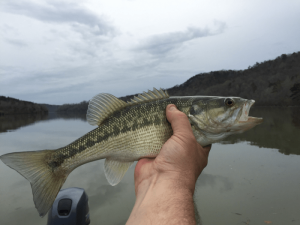
Embark on an exciting journey to explore the best angling spots for trout fishing, where crystal-clear waters and abundant trout await eager anglers. From serene lakes to rushing rivers, each spot offers a unique experience for fishing enthusiasts seeking the thrill of reeling in the prized trout. Get ready to cast your line and immerse yourself in the beauty of nature as you discover these premier angling destinations.
This comprehensive guide will take you through the top locations, essential gear, techniques, and conservation practices to ensure a successful and sustainable trout fishing experience. Get ready to elevate your angling game and create lasting memories in the world of trout fishing.
Overview of Trout Fishing
Trout fishing is a popular recreational activity enjoyed by many anglers around the world. The challenge of catching these elusive fish, paired with the serene beauty of their natural habitat, makes trout fishing a beloved pastime for outdoor enthusiasts.There are various types of trout species that anglers commonly seek out, including rainbow trout, brown trout, brook trout, and cutthroat trout.
Each species presents its unique characteristics and challenges, adding diversity to the angler’s experience.The appeal of trout fishing goes beyond the thrill of the catch. Many anglers find solace in the peacefulness of the remote rivers and streams where trout thrive. The act of casting a line, surrounded by breathtaking scenery and the soothing sounds of nature, offers a sense of relaxation and enjoyment that is unmatched in other forms of fishing.
Best Angling Spots for Trout Fishing
Trout fishing enthusiasts are always on the lookout for the best spots to reel in some prized catches. Here are some top locations worldwide known for excellent trout fishing:
1. Yellowstone National Park, USA
Yellowstone National Park is famous for its pristine rivers and streams teeming with trout. The Madison River, Firehole River, and Yellowstone River offer excellent opportunities for fly fishing enthusiasts. The best time to visit is during the summer months when the hatches are abundant, and the trout are actively feeding.
2. Taupo, New Zealand
Located on the North Island of New Zealand, Lake Taupo is a renowned trout fishing destination. Anglers can target both rainbow and brown trout in the crystal-clear waters of the lake. The fishing season in Taupo typically runs from October to June, with peak fishing opportunities during the cooler months.
3. Patagonia, Argentina
For those seeking a truly remote trout fishing experience, Patagonia in Argentina is a must-visit destination. The region is home to numerous rivers and lakes filled with wild trout, including the famous Rio Limay and Rio Grande. The best time to fish in Patagonia is during the late spring and early fall when the weather is mild, and the trout are most active.
4. Scottish Highlands, Scotland
Scotland’s scenic Highlands offer some of the best trout fishing in Europe. Anglers can explore the numerous lochs and rivers in the region, such as Loch Awe and the River Tweed, for a chance to catch wild brown trout. The trout fishing season in Scotland typically runs from March to October, with the summer months being particularly productive.
5. Kamchatka Peninsula, Russia
For an off-the-beaten-path trout fishing adventure, the Kamchatka Peninsula in Russia is a hidden gem. The region is home to pristine rivers and streams teeming with native rainbow trout and massive Siberian taimen. The best time to fish in Kamchatka is during the summer months when the rivers are clear, and the fish are actively feeding.
Essential Gear and Equipment
When it comes to trout fishing, having the right gear and equipment can make all the difference between a successful day on the water and coming home empty-handed. From the rod and reel to the bait and tackle, each piece plays a crucial role in your fishing experience.
Must-Have Gear for Successful Trout Fishing
- A high-quality fishing rod that is lightweight and flexible, providing sensitivity to feel the bites and strength to reel in the fish.
- A reliable fishing reel, such as a spinning reel or baitcasting reel, that matches the rod and can handle the size of trout you are targeting.
- A variety of bait options, including artificial lures, live bait (such as worms or minnows), and flies to entice trout to bite.
- A tackle box stocked with a selection of hooks, sinkers, swivels, and other terminal tackle to customize your rig based on the fishing conditions.
- Polarized sunglasses to reduce glare on the water’s surface and help you spot fish more easily.
- A landing net to safely bring in your catch without risking injury to the fish or losing it at the last moment.
Choosing the Right Gear for Weather and Water Conditions
- Consider the weather conditions when selecting gear, such as using heavier tackle for windy days or lighter gear for calm conditions.
- Adjust your bait choice based on the time of year and water temperature, as trout may be more active and feeding on different types of bait during different seasons.
- Match the size and color of your lures to the natural prey of the trout in the area you are fishing, taking into account the clarity of the water and the depth at which the fish are feeding.
- Be prepared with different types of line, such as monofilament, fluorocarbon, or braided line, to adapt to the specific fishing situation and target species.
- Experiment with different rig setups, weights, and leader lengths to find what works best for the trout in the particular fishing spot you are targeting.
Techniques and Strategies

Trout fishing requires a combination of different techniques and strategies to increase your chances of a successful catch. Whether you prefer fly fishing, bait fishing, or lure fishing, understanding the behavior of trout and knowing how to locate them in different water bodies is essential. Here, we will discuss various techniques and strategies to help you improve your trout fishing skills.
Fly Fishing
Fly fishing is a popular method for trout fishing, especially in rivers and streams. It involves using artificial flies made of feathers, fur, and other materials to mimic the insects that trout feed on. When fly fishing for trout, it’s important to focus on presenting the fly accurately and delicately on the water surface to entice the fish to bite.
Additionally, mastering the art of casting and controlling the fly line is crucial for success in fly fishing.
Bait Fishing
Bait fishing is another effective technique for catching trout, especially in lakes and ponds. Common baits used for trout fishing include worms, powerbait, and salmon eggs. When bait fishing for trout, it’s important to choose the right bait based on the fishing conditions and the preferences of the fish. Properly rigging your bait and using the right gear, such as a sensitive rod and reel, can also improve your chances of hooking a trout.
Lure Fishing
Lure fishing is a versatile technique that involves using artificial lures to attract and catch trout. Lures come in various shapes, sizes, and colors, mimicking different types of prey that trout feed on. When lure fishing for trout, it’s essential to experiment with different lures to see what the fish are responding to. Varying your retrieval speed and technique can also help trigger strikes from trout.
Locating Trout
To increase your chances of catching trout, it’s important to understand where they are likely to be found in different water bodies. Trout are often found near structures like rocks, logs, and undercut banks, where they can seek shelter and ambush prey. In rivers and streams, trout prefer areas with moderate current and oxygen-rich water. In lakes and ponds, trout tend to patrol along drop-offs, weed beds, and inlet/outlet areas.
Casting, Retrieving, and Setting the Hook
When fishing for trout, mastering the art of casting, retrieving, and setting the hook is crucial for a successful catch. Practice your casting accuracy and distance to place your bait or lure in the right spot where trout are likely to be. When retrieving your bait or lure, vary your speed and motion to entice strikes from trout. Once you feel a bite or see a strike, set the hook firmly and quickly to secure your catch.
Conservation and Sustainability
Trout fishing enthusiasts play a crucial role in preserving the delicate balance of trout populations in rivers and streams. By adopting sustainable fishing practices and practicing catch and release, anglers can ensure the long-term health and sustainability of trout habitats.
Importance of Catch and Release
One of the most effective ways to conserve trout populations is through catch and release fishing. This practice involves releasing caught trout back into the water unharmed, allowing them to continue their natural lifecycle and contribute to the overall health of the population.
Sustainable Fishing Practices
- Avoid overfishing by adhering to catch limits and regulations set by local authorities.
- Use barbless hooks to minimize injury when catching and releasing trout.
- Handle trout with care to reduce stress and increase their chances of survival after release.
- Stay informed about the health of trout populations in different fishing spots and adjust fishing practices accordingly.
Preservation Initiatives
Several organizations are dedicated to preserving trout habitats and promoting sustainable fishing practices:
- The Trout Unlimited organization works to protect and restore trout habitats across the United States through conservation projects and advocacy efforts.
- The Wild Trout Trust in the UK focuses on habitat restoration and education to ensure the long-term survival of wild trout populations.
- Local fishing clubs and conservation groups often organize clean-up events and habitat restoration projects to support trout conservation efforts in specific regions.
Personal Experiences and Stories

Trout fishing is not just about catching fish; it’s about the unforgettable moments, the challenges overcome, and the satisfaction of being immersed in nature. Anglers often have stories to tell that go beyond the size of the catch.
Memorable Moments on the Water
Whether it’s the first trout caught, a difficult battle with a big fish, or a peaceful day by the stream, every angler has their own memorable moments while trout fishing. These experiences create lasting memories that are cherished for a lifetime.
Challenges and Triumphs
From casting in tricky currents to outsmarting cautious trout, facing challenges is part of the thrill of trout fishing. Share your stories of overcoming obstacles, learning new techniques, and celebrating the triumphs, big or small.
The Joy of Connection with Nature
Trout fishing offers a unique opportunity to connect with nature on a deeper level. The serene beauty of a mountain stream, the sounds of the water, and the wildlife around all contribute to a sense of peace and tranquility that goes beyond just fishing. Share your stories of how trout fishing has brought you closer to nature and provided emotional and psychological benefits.
End of Discussion
As you conclude this exploration of the best angling spots for trout fishing, remember to cherish each moment spent in nature’s embrace. Whether you’re a seasoned angler or a novice enthusiast, the thrill of catching trout in these remarkable locations will stay with you forever. So pack your gear, set out on your next adventure, and make the most of your trout fishing escapades.
Detailed FAQs
What are the best times of the year to visit these top angling spots?
Spring and early summer are ideal for trout fishing in most locations, offering optimal conditions and plentiful catches.
What gear is essential for successful trout fishing?
Must-have gear includes a quality rod and reel, a selection of bait and tackle, polarized sunglasses, and appropriate clothing for varying weather conditions.
How can I improve my casting and retrieving techniques for trout fishing?
Practice regularly to perfect your casting accuracy, vary your retrieval speeds to entice trout, and ensure proper hook setting to increase your chances of a successful catch.
Why is catch and release important for trout conservation?
Catch and release helps maintain healthy trout populations, preserves the ecosystem balance, and ensures sustainable fishing practices for future generations of anglers.





